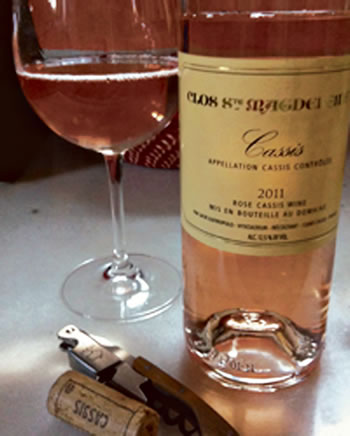Defining A Classic Cabernet Sauvignon
I recently returned from a trip to Napa Valley with a grim observation. I believe that most drinkers no longer know what a “classic” Cabernet Sauvignon tastes like. With the taste of the most influential wine critics, Napa Valley wine producers are chasing flavor and richness in their wines. The result is that Cabernets no longer taste like they did 20 or even 10 years ago.
Among all the dark-berry characters of blackberry, cassis and dried plums that everyone is familiar with in Cabernet Sauvignon, there also is this savory component that is “classic” to this regal black grape. They can remind people of tobacco, green herbs and, in some extreme cases, like bell pepper. Great Bordeaux from 20 years ago and older certainly had these components, as did Cabernets from Napa Valley of the same era. However, today’s critics and moreover Cabernet drinkers have eschewed the value and the flavor of everything that is savory in Cabernets. They see this vegetal note as being “underripe” and “weedy” – certainly something to be avoided at all costs.
I learned during much time spent with Silver Oak’s director of wine-making Daniel Baron, who is an unbelievable fountain of knowledge, that the “green” aroma and flavor that is found in Cabernet is known as pyrazine and is endemic to the grape variety. (Did I mention that Daniel has been making wine for almost 30 years, spent some time at Petrus and had a hand in the 1982 vintage, and speaks French? He’s as sharp as a Ginsu!)
It even exists in the grape at full maturity. What vinegrowers do to eliminate them altogether is to leave the grapes on the vine long after they have reached their highest sugar levels and even after the sap has gone back down into the root system.
During this period, the grape does not take on anymore sugar. But it starts to lose volume (water), acidity and the pyrazine begins to break down in the skin of the grape, eventually dissipating. The resultant wine has nary a whiff of the “green stuff.”
But I expect a little bit of it in “classic” Cabernet. There is rarely a season where Napa Valley vine-growers find it difficult to get full ripeness in their Cabernets. They have plenty of sun and warmth nine years out of 10. What critics judge to be close to “perfection” or “classic” (read 100 pointer) Cabernet is now really a completely different expression. The sleek, cleanliness, power, alcohol and effusive and perhaps excessive ripeness of today’s Cabernets are quite unlike those made 20 years ago.
If you like or even love that style, that’s fine by me, but please don’t call it classic. I don’t have to like it. But let me tell you that the best Cabernet of the entire trip in Napa Valley was a 1985 Silver Oak Napa Valley Cabernet Sauvignon served from a 9-liter bottle. There were no automated sorting tables or concentrators back then. Yet it was utterly stunning, glorious Cabernet. It was a complete wine, brimming with secondary aromas of dried fruits, mocha and earth – and, yes, a flash of that pyrazine.
Recommendations: 2010 Neyers El Novillero Chardonnay ($35) with a powerful aroma of tropical fruit and oranges, this wine backs it all up with a mouth-coating richness and viscosity that is nothing short of impressive. 2011 Clos Ste Magdeleine Rosé ($25) It’s still hot out, and dry rose is still HOTTER! This one sings with citrus and herbs de Provence. It is one of those wines that give you rose-colored glasses on life.
Roberto Viernes is a master sommelier. Email rviernes@southernwine.co m or follow him on Twitter @Pinotpusher.






